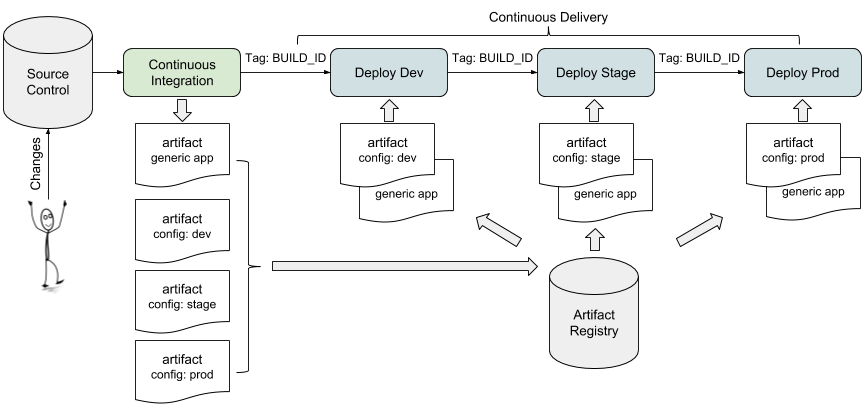The world of software development is changing faster than ever before. The demand for new applications and services has never been higher, but the market has also become increasingly competitive. The need for agile development methods that can keep up with this rapid growth is essential to your company's success.
The Agile DevOps Solution: A Brief Background
Agile DevOps is a software development methodology that combines the best of Agile and DevOps. It's a fast, flexible way to build, deploy and run software. With Agile DevOps solutions, you can dramatically increase efficiency, speed, and quality while reducing costs at every stage of your project lifecycle.
The combination of these two disciplines enables organizations to deliver applications faster than ever before by automating manual tasks so they can focus on more complex activities such as developing new features or enhancing existing ones. This also helps them avoid errors when moving code into production environments because everything has been tested before being released into production environments a process known as continuous delivery (CD).
Key Aspects of Agile DevOps Solutions:
Agile Project Management: Agile DevOps Solutions are built on the principles of Agile project management methodologies such as Scrum or Kanban. This allows for iterative development, frequent communication, and continuous improvement.
Continuous Integration and Continuous Deployment (CI/CD): Agile DevOps Solutions heavily rely on CI/CD pipelines to automate the source code integration, build, testing, and deployment processes. This ensures faster and more reliable software releases.
Collaboration and Communication: Agile DevOps fosters a culture of collaboration and effective communication between development, operations, and other stakeholders. Cross-functional teams work together to achieve common goals and resolve issues more efficiently.
Automation: Automation is at the core of Agile DevOps Solutions. By automating repetitive tasks, such as testing, deployments, and infrastructure provisioning, teams can reduce errors, improve speed, and increase productivity.
Infrastructure as Code (IaC): Agile DevOps Solutions leverage IaC principles to treat infrastructure provisioning and management as code. This allows for version control, automated provisioning, and consistency in infrastructure deployment.
Monitoring and Feedback Loops: Agile DevOps Solutions emphasize the importance of monitoring applications and infrastructure in real time. This allows for proactive issue detection and timely feedback, enabling teams to make data-driven decisions for improvement.
DevOps Culture: Agile DevOps Solutions require a cultural shift toward a collaborative, transparent, and learning-focused environment. This involves fostering a blame-free culture, encouraging knowledge sharing, and promoting continuous learning and improvement.
These are just some of the key aspects of Agile DevOps Solutions from DevOps service companies like ITOutposts. Implementing these practices can help organizations deliver software faster, with improved quality, and increased customer satisfaction.
The Benefits of Software Development With an Agile DevOps Solution
There are many benefits to using an agile DevOps solution, including:
- Increased productivity: Software development teams can be more productive because they have fewer manual processes and less time spent waiting for build approvals.
- Improved software quality: With automated testing in place, there's less chance of bugs slipping through the cracks.
- Reduced time to market: With continuous integration and delivery (CI/CD) tools, developers can deliver code changes faster than ever before - even when working with large projects or multiple repositories simultaneously! This means that you'll get new features out sooner rather than later, which will help keep your customers happy.
- Improved customer satisfaction: Your customers will love being able to access new features with just a few clicks of their mouse or tap on their phone screen instead of waiting weeks or months for them! Plus you'll enjoy seeing those monthly subscription fees go up as people start signing up left and right knowing how easy it is now compared with before.
Best Practices for Implementing an Agile DevOps Solution
When you're planning for a new Agile DevOps solution, it's important to consider the end-to-end process. The most successful implementations are those that take into account all aspects of software development and deployment. This includes:
- Planning for the entire lifecycle of your project, from idea generation through implementation and maintenance.
- Understanding your business needs and goals and how they align with those of your customers/users to ensure that any changes made will have maximum impact on productivity or efficiency.
- Taking advantage of automation wherever possible to reduce manual tasks like testing or configuration management (CM). It should also be noted that CM tools can help improve communication between developers and other stakeholders by providing clear documentation about what changes have been made throughout the development process.
Conclusion
The Agile DevOps Solution is a powerful tool that can be implemented in any organization. The benefits of software development with an agile DevOps solution are numerous, but the most important one is that it allows your team to work more efficiently and productively. This means that they will be able to deliver features faster while also improving quality assurance processes across all phases of development such as testing or production support activities like code reviews or code deployment automation tools.


